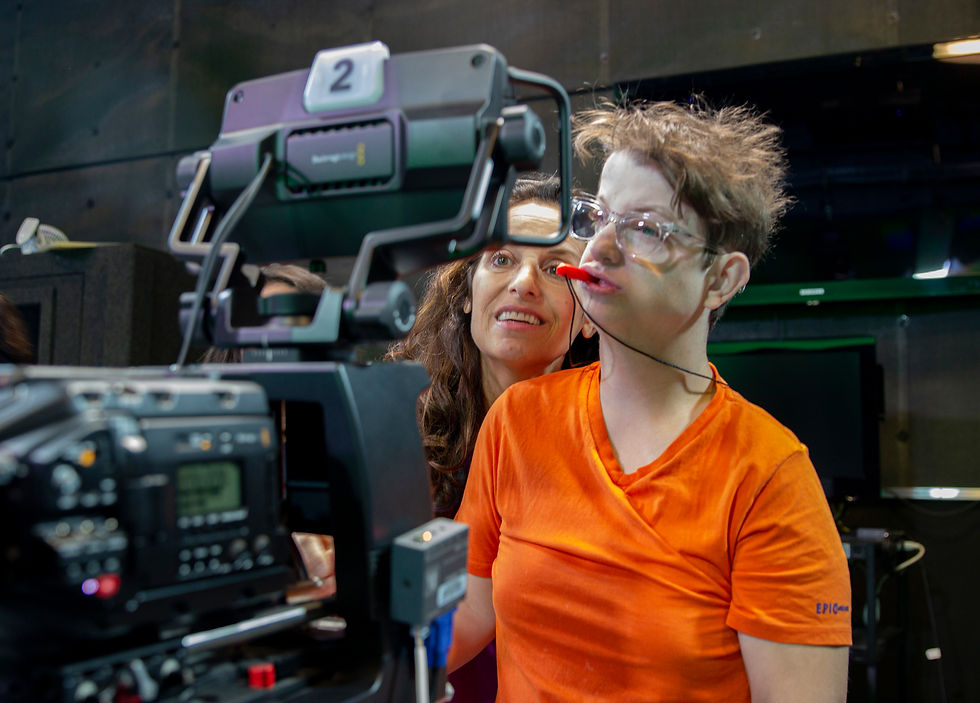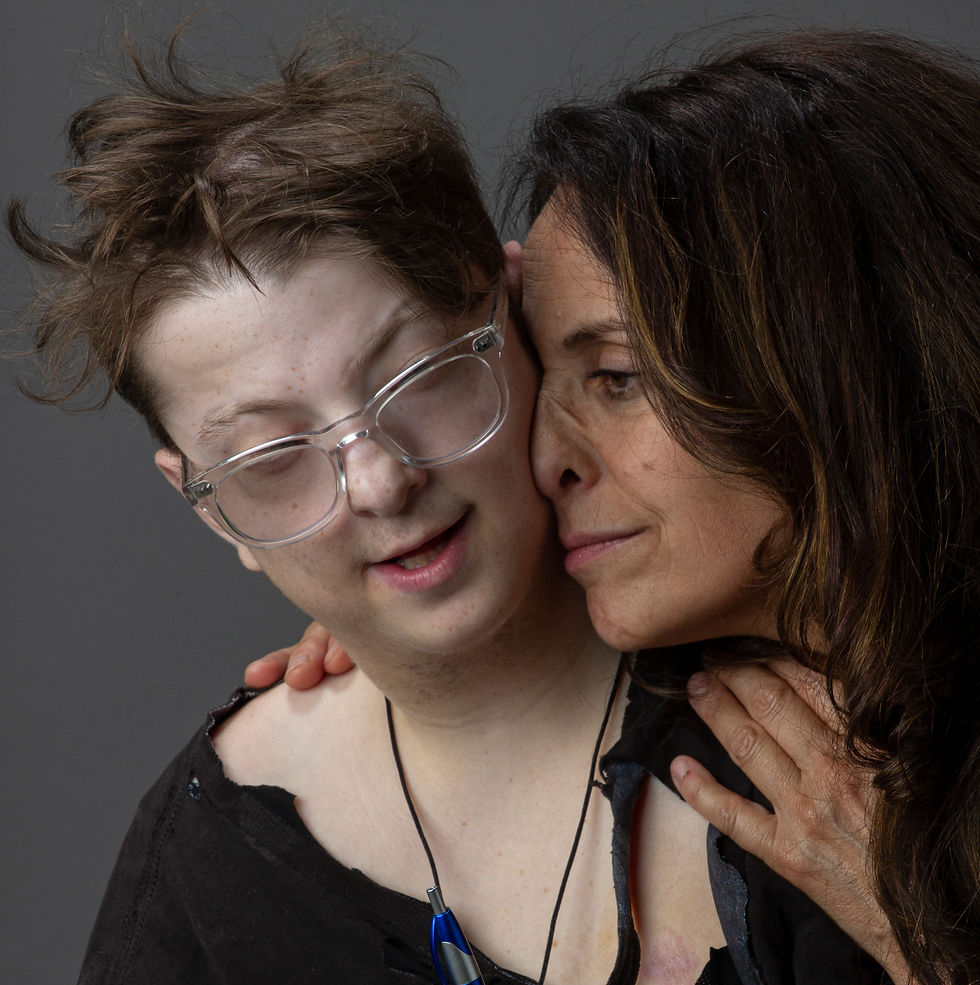Cannarella and Hatch: Champions of inclusion
- Natalie Metcalf
- Nov 4, 2022
- 3 min read
Two members of the abilities club are spearheading inclusivity in classrooms.
By Ava Rosate, Staff Writer

Pioneers of inclusive learning, Christina Cannarella and her son Johnny Hatch, advocate for the rights of disabled students in traditional classrooms.
Hatch is 24 years old and lives with autism. The second year Valley College student is considered a non typical communicator — he expresses himself with physical touch, vocal sounds and facial expressions. In 2003, Cannarella made the decision to move to California from Wisconsin with her son so he could attend a school that was aligned with their beliefs. In the 13 years Hatch has been in the education system, he had never been enrolled in a special education class, as they can be socially and educationally limiting.
The broadcasting student spent kindergarten through eighth grade in a school that fostered a more inclusive learning environment — when children with learning disabilities and children without disabilities are taught in the same classroom and slight modifications are added to the course.
Hatch has never been placed in a strictly special education class, so when he entered high school, his mother had to make the decision to put him in a school where he would be the only student with special needs in a traditional classroom and risk bullying or, he could attend school where he would exclusively be in a special education class.

As her son is socially motivated by his peers, Cannarella, knowing the risks associated with a standard class, made the ultimate decision to enroll her son in a standard classroom where he can be around students.
“He needed to be around people,” the 54 year-old mother. “He started walking at 3 years-old because he saw the other children around him doing it. He is motivated by the people around him.”
After graduating from Taft High School, Hatch enrolled into a school exclusively for young adults with learning disabilities. There, his mother connected with a parent of a young adult who was interested in enrolling at Valley. Curious as to what Valley had to offer, Cannarella visited the campus and immediately found a community that would suit her and her son’s needs.
The first class the mother and son duo took together was a physical education class, where Dave Mallas, Valley’s athletic director, welcomed them with open arms. Their meeting snowballed into Cannarella embedding herself in the Valley community, speaking at two district meetings involving special needs students, becoming close with faculty and staff and earning the position of vice president of the Abilities Club.
Now they are taking a broadcasting course that encourages hands-on learning by using camera and audio equipment.
Though the broadcasting student is allowed to enroll in any class he chooses, his mother is looking for hands-on courses, where he can have direct help from teachers. Due to common class curriculums based on textbooking readings, most courses lack the inclusion efforts that would benefit students like Hatch.
According to the vice president of the Abilities Club, many people retain information when paired with hands-on learning. If the courses were slightly modified for the disabled, it would benefit all of the students in the class.
“Integration is allowing people with learning challenges to learn the same way as people without those challenges. Inclusion is slightly modifying the course to better accommodate all students,” said the 54 year-old mother.

AV在线看 AV在线看;
自拍流出 自拍流出;
国产视频 国产视频;
日本无码 日本无码;
动漫肉番 动漫肉番;
吃瓜专区 吃瓜专区;
SM调教 SM调教;
ASMR ASMR;
国产探花 国产探花;
强奸乱伦 强奸乱伦;
AV在线看 AV在线看;
自拍流出 自拍流出;
国产视频 国产视频;
日本无码 日本无码;
动漫肉番 动漫肉番;
吃瓜专区 吃瓜专区;
SM调教 SM调教;
ASMR ASMR;
国产探花 国产探花;
强奸乱伦 强奸乱伦;
代发外链 提权重点击找我;
谷歌蜘蛛池 谷歌蜘蛛池;
Fortune Tiger…
Fortune Tiger…
谷歌权重提升/ 谷歌权重提升;
谷歌seo 谷歌seo;
谷歌霸屏 谷歌霸屏
蜘蛛池 蜘蛛池
谷歌快排 谷歌快排
Google外链 Google外链
谷歌留痕 谷歌留痕
Gái Gọi…
Gái Gọi…
Dịch Vụ…
谷歌霸屏 谷歌霸屏
负面删除 负面删除
币圈推广 币圈推广
Google权重提升 Google权重提升
Google外链 Google外链
google留痕 google留痕
代发外链 提权重点击找我;
谷歌蜘蛛池 谷歌蜘蛛池;
Fortune Tiger…
Fortune Tiger…
谷歌权重提升/ 谷歌权重提升;
谷歌seo 谷歌seo;
谷歌霸屏 谷歌霸屏
蜘蛛池 蜘蛛池
谷歌快排 谷歌快排
Google外链 Google外链
谷歌留痕 谷歌留痕
Gái Gọi…
Gái Gọi…
Dịch Vụ…
谷歌霸屏 谷歌霸屏
负面删除 负面删除
币圈推广 币圈推广
Google权重提升 Google权重提升
Google外链 Google外链
google留痕 google留痕
代发外链 提权重点击找我;
蜘蛛池 蜘蛛池;
谷歌马甲包/ 谷歌马甲包;
谷歌霸屏 谷歌霸屏;
谷歌霸屏 谷歌霸屏
蜘蛛池 蜘蛛池
谷歌快排 谷歌快排
Google外链 Google外链
谷歌留痕 谷歌留痕
Gái Gọi…
Gái Gọi…
Dịch Vụ…
谷歌霸屏 谷歌霸屏
负面删除 负面删除
币圈推广 币圈推广
Google权重提升 Google权重提升
Google外链 Google外链
google留痕 google留痕